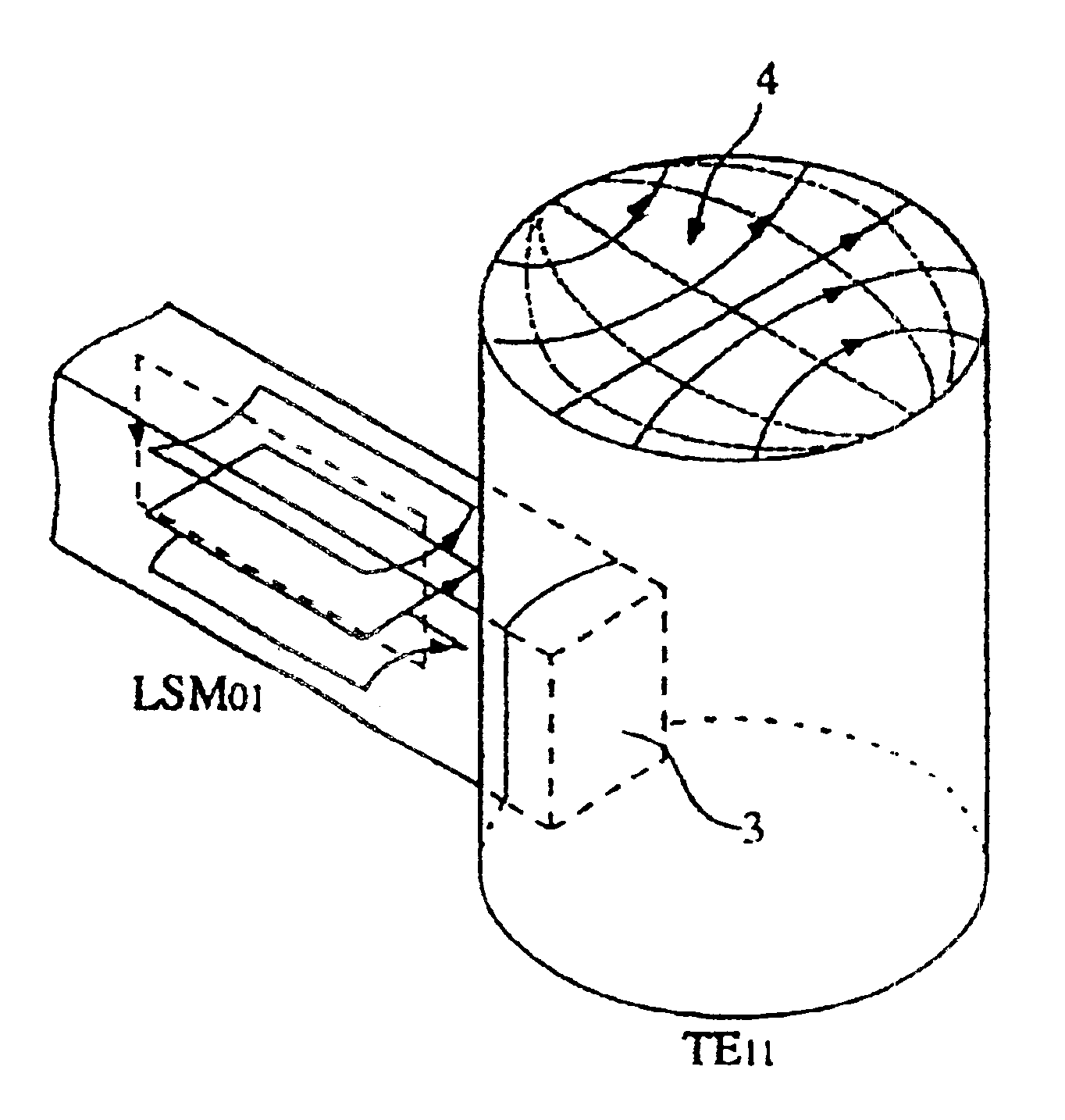Line transition device between dielectric waveguide and waveguide, and oscillator, and transmitter using the same
a transition device and dielectric waveguide technology, applied in waveguides, resonators, electrical equipment, etc., can solve the problems of lowering the transmission efficiency, high cost, and inconvenient switching of the line transition device, and achieves low loss, small size, and easy transmission.
- Summary
- Abstract
- Description
- Claims
- Application Information
AI Technical Summary
Benefits of technology
Problems solved by technology
Method used
Image
Examples
fourth embodiment
A construction of a connecting part of the dielectric waveguide according to the present invention is described with reference to FIGS. 7 and 8.
As shown in FIG. 7, dielectric strips 203a and 203b are individually held between conductive plates 201 and 202, whereby the dielectric strip 203a and the upper and the lower conductive plates 201 and 202, respectively, constitute one NRD, and the dielectric strip 203b, and the upper and the lower conductive plates 201 and 202 constitute another NRD.
A waveguide 204 is provided between the above NRDs, and includes the upper and the lower conductive plates 201 and 202, respectively, and side walls (not shown). A predetermined end portion of each dielectric strip 203a and 203b is inserted into (or optionally may be adjacent to) the waveguide 204. It is desirable that the distance L between the top face of the dielectric strip 203a and the bottom face of the dielectric strip 203b is determined so that impedance matching is performed among the tw...
fifth embodiment
A construction of a connecting part of a dielectric waveguide according to the present invention is described with reference to FIGS. 9 and 10.
The difference between the present embodiment and the fourth embodiment is that another NRD guide is connected to the waveguide 304. FIG. 10 shows characteristics S11, S21, and S31 where φa=2.8 mm, L=1.1 mm, H=1.8 mm, and E=0.4 mm in FIG. 9, and the three NRD guides are used as input / output ports. In this example, in the 78 GHz band, low reflection loss characteristics are obtained, observed at the port #1, and low insertion loss characteristics are obtained at ports #2 and #3. The line transition device of the present embodiment can also be applied to a high-frequency circuit having a two-layer structure.
FIGS. 11 and 12 show a construction of a connecting part of a dielectric waveguide and characteristics thereof according to a sixth embodiment. The difference between the present embodiment and the fifth embodiment is that the position of ea...
PUM
 Login to View More
Login to View More Abstract
Description
Claims
Application Information
 Login to View More
Login to View More - R&D
- Intellectual Property
- Life Sciences
- Materials
- Tech Scout
- Unparalleled Data Quality
- Higher Quality Content
- 60% Fewer Hallucinations
Browse by: Latest US Patents, China's latest patents, Technical Efficacy Thesaurus, Application Domain, Technology Topic, Popular Technical Reports.
© 2025 PatSnap. All rights reserved.Legal|Privacy policy|Modern Slavery Act Transparency Statement|Sitemap|About US| Contact US: help@patsnap.com



